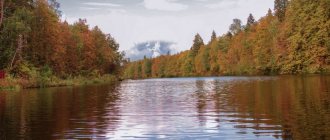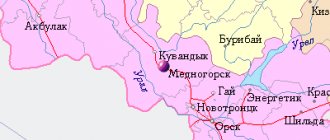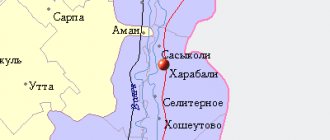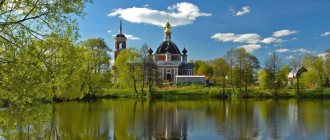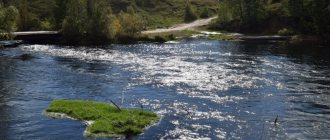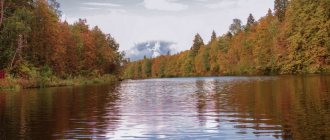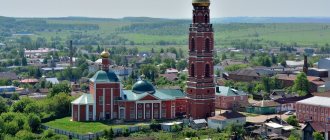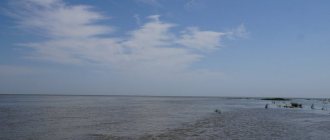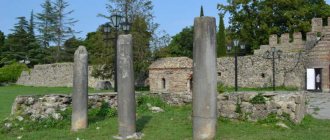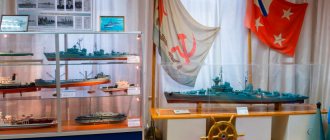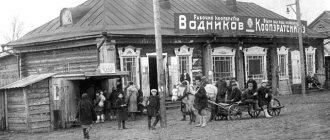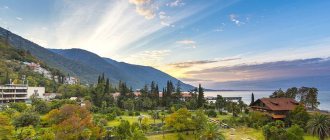Kurgan is a Russian city located on the banks of the Tobol River. The exact date of its foundation is still unknown - scientists have not come to a consensus on this matter. The official version is this: Kurgan grew out of a small peasant settlement founded in 1679 by an ordinary peasant Timofey Nevezhin, who was the first to build himself a home on the banks of the Tobol River among the ancient burial mounds. The settlement grew and developed, and in 1782, through the efforts of Catherine the Great, it was given the status of a city.
Modern Kurgan combines the beauty of a provincial town and a large administrative center of the Kurgan region. The main impetus for rapid development was the Trans-Siberian Railway laid through the city. Now this city is a large industrial center with a developed medical and educational structure. It is in Kurgan that the world-famous center of Ilizarov, the creator of an apparatus for fusion of bones, is located.
For ease of route planning, we have marked all the mentioned attractions on the city map:
Monument to customs officer Pavel Vereshchagin
The most famous monument of Kurgan. The bust of the hero of the film “White Sun of the Desert” is located near the Kurgan customs building.
The monument was erected on the initiative of the head of customs in 2007. The team supported the manager’s initiative, and the required amount was collected very quickly.
Address: st. Burova-Petrova, 132.
What else you need to see in the Kurgan region
Curious tourists will find several more beautiful places in the Kurgan region with an interesting history.
Siberian tract
- Address: Chineevo village, Yurgamysh district.
The route from Moscow to China, which went down in history, passed through the Trans-Urals, including through the modern Kurgan region. Many settlements were founded on the ancient highway, many of which appeared precisely thanks to the famous route. Travelers, traders and convicts walked through the Kurgan land.
Traces of the old road, trampled by tens of thousands of feet, can be seen in some Kurgan villages and hamlets, for example, in the villages of Eloshnoye and Chineevo. In the latter, a sign “Siberian Tract” was installed several years ago.
Geoglyph “Lenin 100 years old”
- Coordinates: 54.467738, 64.797671.
Between the villages of Trud and Znanie and Zverinogolovskoye is located one of the best-preserved geoglyphs of the Soviet era. An unusual planting in the form of the phrase “Lenin is 100 years old” appeared in 1970 in honor of the centenary of the country’s main revolutionary. More than 40,000 seedlings were used to create the giant inscription, which is 600 meters long.
Unfortunately, the scale and detail of the work done can only be fully appreciated from a great height or from photographs. The geoglyph is in excellent condition to this day, every letter is clear, not a single extra tree interferes with reading the inscription.
Miracle tree
- Coordinates: 54.395044, 64.581324.
In the Ozerninsky forest, which grows on the shores of Lake Gorkoye, one curious tree stands out among thousands of pines. A small spreading pine is the oldest “inhabitant” of the forest; its age is close to 200 years.
The old coniferous woman is smaller in size than her young, slender neighbors; her height does not exceed 20 meters. The gift of nature is included in the register of old-growth trees in Russia and is protected by the state.
Ivanov Stone
- Coordinates: 56.217233, 62.102167.
The natural monument Ivanov Kamen is a unique rock outcrop on the surface of the earth for the region. The protected area includes a slope of the Sinara River approximately 40 meters high, forests, logs and quartz porphyry boulders.
The largest block of rock, 50 meters long and 20 meters high, was named Ivanov Stone. The rock overgrown with colorful lichens is often used as an observation deck to view the surrounding area. You can find beautiful stones around; at the foot of the trees you can find jasper, agate, chalcedony, amethyst and carnelian.
The flora of this attraction is no less diverse and interesting; mountain plants such as white lupine and rock fern are found here. 33 plant species are listed in the Red Book.
Belozersk ecological trail
- Coordinates: 55.797234, 65.779304.
A convenient and interesting tourist route was laid out several years ago in the Belozersky district on the territory of a local nature reserve. A walking tour of the natural resources and attractions of this place lasts 2-2.5 hours.
During this time, tourists can explore all 26 attractions along the trail. Most of the objects are feeders for animals: salt licks for ungulates and hares, tables for upland game and others. If you are lucky, you can meet the wild inhabitants of the reserve.
You may be interested in the sights of the regions of the Russian Federation neighboring the Kurgan region - Chelyabinsk, Sverdlovsk and Tyumen regions
The attractions of the Kurgan region bring many benefits to tourists: some are good for recreation and entertainment, others for self-education, and others help improve health. Traveling through this wonderful southeastern region can give not only vivid impressions and new knowledge, but also good health.
Monument Zero Kilometer
Many cities around the world have a similar monument. Residents of Kurgan decided: a monument to the Zero Kilometer should appear in their hometown. A bronze figure of a postman was installed in 2012 at the main post office. Now all roads are measured from this place.
The author of the project is local artist Boris Orekhov. Tourists often take pictures next to the postman.
Address: st. Gogol.
Kurgan region: springs and waterfalls
Lakes and mineral wells are not the only water attractions in the region. In the area you can find revered holy springs and small artificial waterfalls.
Chimeevsky holy spring
- Coordinates: 56.106111, 65.148250.
In the village of Chimeevo, not far from the ancient wooden church, a revered spring flows. Pure cold spring water contains a large number of silver ions, so it has healing properties and does not spoil for a long time.
The source, like the temple, was consecrated in honor of the Kazan Icon of the Blessed Virgin Mary. Pilgrims have been going to the spring since ancient times. In Soviet times, officials tried to destroy the shrine; they covered the key with earth and organized a landfill in its place.
In 1979, villagers dug up a spring and gradually cleaned and landscaped the area. The spring is located in a picturesque pine forest, a neat wooden bridge leads to it, beautiful wells and a large chapel-bath were built above the spring.
Erokhinskie kneaders
- Coordinates: 55.239250, 64.647723.
Near the village of Erokhin, Yurgamysh district, you can admire a unique landmark of the region - dozens of mud wells. The grey-green bubbling mud resembles dough, which is why local residents nicknamed the wells kvass.
Sometimes yellow or blue liquid splashes out of bottomless pits onto the surface of the earth. In 1936, mud volcanoes woke up and threw a fountain of dirty water into the air for about two hours.
It is best to visit this unusual place in the spring before the heat sets in, which sometimes dries out the pits, turning them into yellow circles. Tourists should keep a safe distance from volcanoes so as not to get stuck in them: liquid mud sucks in like a quagmire.
Baskazyk waterfall
- Coordinates: 55.901768, 62.628632.
Waterfalls are a rarity for the Kurgan region. Almost all attractions of this kind were created artificially. One of the most famous examples is the waterfall on the Baskazyk River near the village of Verkhnyaya Techa.
The waterfall appeared after the construction of the dam and has been delighting guests of the area ever since. River waters fall from a height of 5 meters and rush further in a foamy stream. You can often see fishermen near the dam.
Shironinskaya mill
- Coordinates: 54.922472, 64.982883.
A few kilometers from the village of Glyadinskoye on the Tobol River there is a low, but very wide and picturesque artificial waterfall. The river flow falls like a sparkling curtain from the dam and noisily crashes into large stone boulders.
In summer, the area near the waterfall is especially crowded; many people come here to swim and sunbathe. Vacationers put their backs under the stream of water and treat themselves to free hydromassage sessions.
Utyaksky waterfall
- Coordinates: 55.274594, 65.343276.
Another famous artificial waterfall in Kurgan was created on the Utyak River during the construction of a dam in the village of Balki. In the spring the stream is stormy and noisy, but in the summer it becomes low-water and exposes concrete piles.
Some tourists manage to climb under the dam and admire the attraction from the other side. In winter, the waterfall freezes, turning into spectacular greenish blocks of ice.
Monument to Parents
Another project implemented by the Mama Foundation with the support of the residents and authorities of Kurgan. A couple expecting a baby - this is what a monument to parents looks like. Young people are dancing. The beautiful bronze sculptural composition looks touching and tender.
Address: st. Gogol.
There are several interesting exhibitions in Kurgan. One of the museums attracts the attention of all tourists.
Kurgan Aviation Museum
This exposition is the only one in the Urals and Siberia. Aircraft of various brands are located in an open area near the airport. Visitors to the unusual museum will be able to see airplanes and helicopters from different production periods.
Address: st. Gagarina, 41.
There are places in Kurgan associated with the names of the Decembrists. Tourists will be interested in the exhibition of the house-museum of V. K. Kuchelbecker. The museum, which contains exhibits telling about the life of the Decembrist poet, is the only one in Russia. The exhibition is located on the street. Kuibysheva, 19.
Temples and cathedrals
Alexander Nevsky Cathedral
Address: Volodarskogo street, 32 Phone: , Website: https://www.kurganvera.ru Opening hours: 9:00 – 17:00 Mon-Sun
The main Orthodox church of the Kurgan region. A real architectural monument of the 19th century. The cathedral was built at the expense of Archbishop Agafangel of Tobolsk and Siberia, local merchants and parishioners.
The first half of the money was collected in just half an hour. When it became clear that there was not enough, merchant Smolin, in whose house the fundraiser was taking place, donated an amount equal to what had already been collected for the construction of the temple.
For the construction of the cathedral, the highest place in Kurgan was chosen and consecrated, located in the middle of the old, inactive cemetery at that time.
During Soviet times, the temple did not function; its premises housed warehouses, a school and a planetarium. It was only in 1989 that the cathedral was returned to the parishioners and services began to be held there again.
Temple in honor of the Port Arthur Icon of Our Lady Solemnity of the Blessed Virgin Mary
Address: Yastrzhembsky street, 41A/1 Phone: Website: https://www.port-artur-hram.ru Opening hours: 9:00 – 17:00 Mon-Sun
The temple is the first founded and erected after the revolution in Kurgan. It was built in 2011, and in 2013 one of the parishioners donated an icon of the Mother of God to the temple. This is the only icon where the Mother of God is depicted as a protective warrior.
According to legend, the image of the Mother of God appeared to one of the sailors and ordered her face to be transferred to the icon. She predicted an imminent war, promised her protection and blessing if the painted icon was transferred to the Port Arthur Temple. After some time, the Japanese attacked the Russian fleet, and this event left no doubt in the sailor’s words.
The main admirers of the icon of the Triumph of the Blessed Virgin Mary are still sailors and military personnel. And the temple itself is located on the territory of a defense enterprise.
Next to the church there is a small exhibition of military equipment.
Holy Spirit Church
Address: p.s.t. Smolino, Maly Lane, 12 Phone: Website: https://www.kurgan.pro/okn/n166 Opening hours: 7:00 - 17:00 Mon-Sun How to get there: from the railway station and bus station, bus 339 to the stop "Church"
The Church of the Holy Spirit was built in 1901, but at that time it was located not in Smolino, but in the village of Ryabkovo. After about 30 years, the temple was closed, and for a long time its premises were used as barns for storing grain. Later a club was opened here, and after that a primary school.
Only in 1956 the church premises were returned to the parishioners again. In 1963, in connection with the reconstruction of the city of Kurgan, an order was received to demolish the church. Through joint efforts we managed to avoid demolition and achieve the transfer of the church to Smolino.
The Temple of the Holy Spirit is the second most important after the Alexander Nevsky Cathedral; it is very popular for baptismal rites.
The temple contains the relics of the Stavropol and Caucasian bishop St. Ignatius.
Decembrists Museum
In 1975, an exhibition dedicated to the activities of the Decembrists opened in the city. The museum is located in the house where Colonel M.M. Naryshkin lived since 1832.
Letters have been preserved, thanks to which it was possible to restore the exact interiors of all rooms and the internal layout. The façade looks the same as it did in the 19th century. In the museum, visitors will be able to feel the breath of past years and see hundreds of interesting exhibits.
Address: st. Klimova, 80.
Parks
Central Park of Culture and Leisure
Address: Central Park of Culture and Culture, 4 Telephone:
The Central Kurgan Park is located in the heart of the city in a picturesque green landscape. There are many fountains and sculptures, an amusement park, and all conditions for sports.
The Children's Kurgan Railway runs through the entire territory of the park. Platforms, railway tracks, trains - everything here is real, only several times smaller. Children can walk around the station, buy a ticket and ride the train, and study in detail the structure of the railway.
The Central Park of Culture and Recreation has been the main place for celebrating the city day for many years.
Cultural-historical complex “Tsarevo Settlement Park”
Address: Constitution Avenue, 32A Phone: Website: https://www.cbs-kurgan.com/carevo_gorodishe/ Opening hours: 9:00 – 19:00 Mon-Fri, 10:00 – 18:00 Sat, 11:00 – 16:00 Sun Cost: 15 – 80 rub.
This place represents the recreated buildings of the Tsarevo Settlement village. This is exactly the name the city had before Catherine the Great called it Kurgan. The cultural and historical complex allows you to imagine exactly what Kurgan looked like in the 17th century.
Art Museum
Museum workers quite rightly believe that the collection collected within the walls of the museum is unique. There are no similar exhibitions in the Kurgan region, numbering thousands of works by contemporary artists from different regions of Russia.
Visitors will see paintings by N. Dormidontov, O. Sokolova, A. Deineka, G. Shegal and many other authors. The museum often hosts creative meetings and exhibitions dedicated to memorable dates in the history of Kurgan and the region.
Address: st. Maxim Gorky, 129.
Kurgan archeological and architectural monuments
People inhabited the territory of the modern Kurgan region about 20,000 years ago. Scientists to this day find objects and structures from different historical eras in the Kurgan land.
Tsarev Kurgan
- Address: Kurgan, Energy district.
In the very heart of the region, in the vicinity of the city of Kurgan, stretches a chain of ancient burial mounds from the Bronze and Iron Ages. The largest conical-shaped burial mound gave its name to the settlement, and now to the regional center.
According to legend, the daughter of a certain Siberian khan rested in the Tsarev Kurgan, but historians have not found evidence for this version. In the 18th century, a provincial official ordered the mound to be opened in the hope of finding treasure. Workers began excavations at the top of the hill, found nothing, but ruined the appearance of the mound.
Over time, the ugly pit left over from the search was filled up, the site was leveled, decorated with a gazebo, and the mythical treasures were forgotten for a long time. Only tomb robbers periodically dug into the hills and found ancient artifacts.
In 1893, scientists got down to business. Archaeologist Axel Geikel, together with his assistants, opened two neighboring mounds and collected a collection of artifacts. In Soviet times, an expedition from the Ural University conducted the first full-fledged excavations of the Tsarev Kurgan.
Scientists discovered a wooden flooring over the tomb, fragments of tools, fragments of dishes and many other objects. In subsequent years, builders almost completely destroyed the mounds. In 2013, the Tsarevo Settlement Park was opened in their place.
Pure Swan burial grounds
- Coordinates: Chistolebyazhye village, Belozersky district.
The tiny village of Chistolebyazhye has long been abandoned and is of interest only to archaeologists and history buffs. Three burial grounds were found in the vicinity of the settlement. The oldest was created in the second millennium BC. e., the other two - in the period from the 8th century BC. e. to 3rd century AD e.
Excavations of the necropolis began in the 1970s, the first researcher of archaeological sites was V. A. Mogilnikov. In addition to human graves, scientists discovered animal burials, traces of ritual fires, stone arrowheads, clay vessels, bronze beads and other objects.
Pany town
- Coordinates: 56.157884, 64.611070.
Murzinskaya Mountain on the banks of the Iset River is popular among athletes and outdoor enthusiasts. In winter, skiers and snowboarders ride on its birch-covered slopes; in summer, young people go on hikes and picnics.
At the top there is a cozy wooden gazebo. Few vacationers know that the small mountain has a long and eventful history. Traces of the Yuda culture were found on the hill - more than 150 dugouts and half-dugouts, a fortress rampart, metal arrowheads and spears, vessels and a burial ground.
The first excavations on the territory of the archaeological monument were carried out back in 1846. Also at the foot of the mountain there are trenches from the Civil War.
Dalmatovsky Assumption Monastery
- Address: st. Sovetskaya, Dalmatovo.
In the city of Dolmatovo, the oldest Orthodox monastery in the region has been preserved. The monastery was founded in 1644 by the hermit monk Reverend Dalmat; the city was later named after the saint.
Initially, all the buildings were wooden, only half a century later their place was taken by monumental stone structures. Powerful stone walls were worthy of royal fortresses, high spacious churches could accommodate hundreds of believers.
Before the October Revolution, the monastery more than once found itself at the center of important historical events. It became the prototype of the Prokopyevsky Monastery in the story “Okhonin’s Eyebrows” by the famous Russian prose writer D. M. Mamin-Sibiryak. Also, guilty monks or disgraced military men were often exiled here.
After 1917, many inhabitants were repressed, and the monastery became the property of the working people. The temples and towers were partially destroyed and rebuilt, with . The monastery is currently being revived.
Dugouts from WWII
- Address: s. Bolshoye Chausovo, Ketovsky district.
The Kurgan region not only stores artifacts of antiquity, more recent events also left their mark on its land. Thus, in the village of Bolshoye Chausovo, dugouts built during the Great Patriotic War have survived. They were dug by soldiers of the tank school, which was evacuated from Stalingrad in 1942.
In a matter of days, the military created many temporary shelters with log ceilings and dirt floors. Local residents cherish the buildings as a memory of the terrible war and the defenders of the Motherland who died on the battlefields.
Kurgan Museum of Local Lore
The museum's exposition is one of the richest in the vastness of Siberia and the Urals. More than 200 thousand valuable exhibits cover the period from the primitive system to the present.
Thematic exhibitions are organized in the halls of the museum, which contain archaeological and paleontological finds, ancient manuscripts, silver and metal jewelry, ancient weapons, household items, photographs and archival documents.
You can spend the whole day in the halls of the museum. Come early. The museum is open from 9 a.m. to 5 p.m. Monday is a day off.
Address: st. Pushkina, 137.
Kurgan region: TOP 3 places to go right away
The visiting card of the Kurgan region is health resorts and mysterious ancient monuments. We have placed them in the “Main Attractions” section.
Bear Lake
- Coordinates on the map: 55.199537, 67.997895.
Medvezhye is a salt lake in the Petukhovsky district near the border with Kazakhstan and one of the best resorts in the region. The pond is shallow, so children can swim in it safely. The maximum depth does not exceed 1.2 meters.
The waters are so saturated with salt that they easily float even large adults. In terms of its characteristics, the reservoir is comparable to the Dead Sea. In the middle of the lake, six islands protrude from the water.
In summer, the pond is filled with salted brine shrimp - tiny crustaceans that turn the water brown and secrete a special enzyme that calms the nervous system.
Artemia are the only creatures capable of living in such an environment; neither fish nor algae can withstand such salty water. Silt has healing properties and is used in the treatment of many diseases. A health resort has been operating on the northern shore for many years.
Shadrinsky mineral waters
- Address: Shadrinsky district, Verkhnyaya Polevaya village, Sovkhoznaya street, 11.
In the vicinity of the city of Shadrinsk there are several mineral springs, famous for their bottled water “Shadrinskaya”. Geologists discovered the priceless deposit in 1970. Scientists and workers were looking for ordinary fresh water to supply the city, but accidentally discovered a real natural treasure.
In 1984, Shadri residents began bottling water. One of the wells was equipped for the city food processing plant, the second for the Zhemchuzhina Zauralya sanatorium.
Over the course of several years, specialists drilled about 30 wells. Shadrinskaya mineral water, which contains more than 20 useful substances, is compared with Borjomi and Essentuki.
The village of Verkhnyaya Polevaya also has a hot mineral spring. The temperature there stays at 33°C all year round. Water is supplied to swimming pools with hydromassage units.
Savin Sanctuary
- GPS coordinates: 55.698253, 65.644588.
Near the village of Buzan, on a small hill lies the main archaeological pride of the Kurgan region. The unusual ruins are the remains of an observatory sanctuary, in which ancient people performed religious rituals and observed the heavenly bodies. In the spring, during high water, the river floods at the foot of the hill, perhaps that is why the area is called Savin in Ugric, which translated into Russian means “hill among the swamps.”
The archeological monument was opened in 1982 by local resident Vasily Babushkin. Vasily Pavlovich collected several ancient artifacts and donated them to the local history museum. Experts became interested in the finds, conducted a series of excavations near the village and discovered two adjacent circles that looked like a huge figure eight.
Nearby they found more than a hundred holes left from pillars and three human graves. Archaeologists also found traces of fireplaces and pits with sacrifices, which contained fragments of ceramics, items made from various materials and animal bones. Scientists managed to collect more than 7,000 objects.
The sanctuary was built in the Eneolithic era, that is, more than 4000 years ago, the structure is 1000 years older than the famous Arkaim. The observatory was nicknamed “Kurgan Stonehenge”, while the Russian landmark appeared much earlier than the British one. In the vicinity there are three more archaeological monuments: Savin-2, the Slobodchiki-1 sanctuary and the Okhotino-1 settlement.
City History Museum
Visit the merchant mansion that belonged to the merchant of the 1st guild S.I. Berezin. This stone urban-type estate is the only one in the vast Trans-Urals that has preserved an enclosed courtyard with a central house and outbuildings.
The 19th-century estate contains documents, photographs of city streets, and personal belongings that belonged to famous citizens. Visit the museum on the street. Kuibysheva. On the same street there is the house-museum of the Decembrist V.K. Kuchelbecker.
Address: st. Kuibysheva, 59.
Fire Tower
One of the oldest symbols of the Kurgan. The city government in 1877 decided to build the structure that the city needed. Four years later, the stone fire building and tower were put into operation.
Today the fire complex of the 19th century is an architectural monument. A firefighter dummy is installed on the tower.
Address: st. Kuibysheva, 62.
